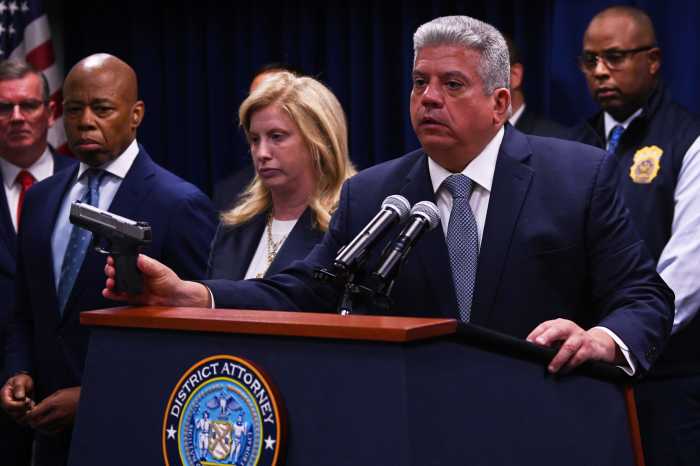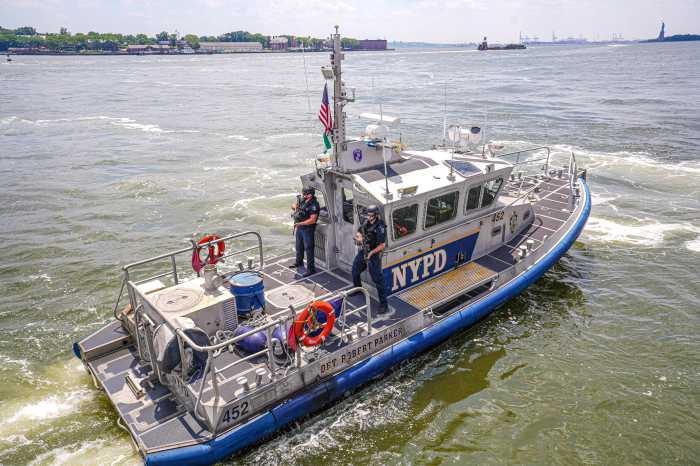For over three decades, Alan Reiss has been the caretaker for the World Trade Center.
The 65-year-old Port Authority executive started out as the chief electrical engineer for both towers in 1984 and now is the director of World Trade Center construction and major capital projects. He’s overseen everything from routine electrical problems to the opening of One World Trade Center, and honoring the victims of the 1993 bombing remains an intensely personal mission for him.
“’93 doesn’t get a lot of attention because of 9/11, but none of us who were there forget it or the people we lost,” he said.
On Feb. 26, 1993, Reiss returned from lunch to his office in one of the basements, not far from where the bomb went off around 12:17 p.m. A host of scenarios went through his head before he figured out what was going on, he recalled.
“I realized it’s a bomb, and I remember telling everyone in the office, ‘It’s a bomb, everyone get out,’” he said.
Reiss led his team up the stairs, where they were immediately met with thick black smoke. Fortunately, his training as a volunteer firefighter helped them get to safety.
“I just hugged the floor and got to the control center . . . and they were in the process of evacuating,” he said. “We went up [to the ground floor] and met the fire chief, I remember his name, Donald Burns, and I told him what had happened.”
Reiss worked with Burns to get to the blast site and investigate the explosion and said he was shocked to see the brunt of the destruction.
“All you saw was cars flipped over, upside down, tires burning, a giant crater, large water pipes broken, water spewing out every which way, electric circuits,” he said. “It was like a scene out of Dante’s Inferno.”
Reiss pushed fear aside and went to work searching the building for victims alongside first responders. Using the towers’ blueprints, he and other responders marked locations, elevators and other areas as safe as they were cleared.
The blast killed John DiGiovanni, Robert Kirkpatrick, Stephen Knapp, Bill Macko, Wilfredo Mercado and Monica Rodriguez Smith, who was seven months pregnant. Over 1,000 other people were injured in the explosion.
Reiss said his firefighter experience helped him again in the aftermath of the tragedy.
“You sort of take that oath that that’s what you do, you run into a problem, you don’t run away from it,” he said.
In the following days, he and other building administrators and first responders worked around the clock to clear debris from the basement and restore power and water operations. Roughly a month later, the towers reopened for business — the biggest statement, he said, against the terrorists who committed the acts.
“It was my home, it was my building, and . . . we were going to get this building rebuilt,” he said.
Moving forward, Reiss and his administrators implemented several security changes. A fortified police office was constructed on the north side of the World Trade Center property, not too far from the towers, and mandatory evacuation drills and instructions were given to tenants and their managers.
“We did fire drill videos and made sure the fire wardens [were] executives, because you’re most likely to listen to a vice president or something like that,” he said.
No amount of training could prepare Reiss for what would happen eight years later on Sept. 11, 2001. He was attending a breakfast meeting at a nearby restaurant with other building managers when the first plane hit. Once again, he didn’t hesitate to spring into action.
“You can either panic or think about what you have to do next,” said Reiss.
He was coordinating rescue efforts with first responders and elected officials in the police office when the towers collapsed around them. Officers trapped with him were able to clear a hole and they emerged into the smoke-and-debris filled streets.
“You really don’t know what death is like until I tapped the police captain and asked are we alive or not,” he said, “In ’93, I don’t think I ever felt that fear.”
Reiss said both attacks were terrifying for his family, since they had no contact with him for hours.
“My son sort of withdrew and said, ‘This was difficult. We nearly lost you twice,’” he said.
Yet, once again, Reiss found himself determined to make sure the World Trade Center was rebuilt, and he has spent the past 16 years working on its redevelopment. Reiss said it was also paramount for the site to pay tribute to the women and men who suffered during the first attack.
Every year, he gathers the 1993 victims’ families, survivors and first responders for a memorial Mass and breakfast.
“It’s a somber day, but it’s a day to make sure those six family members are remembered,” he said.
Reiss said the ceremonies have gotten tougher since many of the survivors and victims’ family members have passed away, but he is determined to keep their memories alive.
“We’ll keep doing it, having the Mass, the ceremonies, as long as I’m physically capable of doing it,” he said.
































